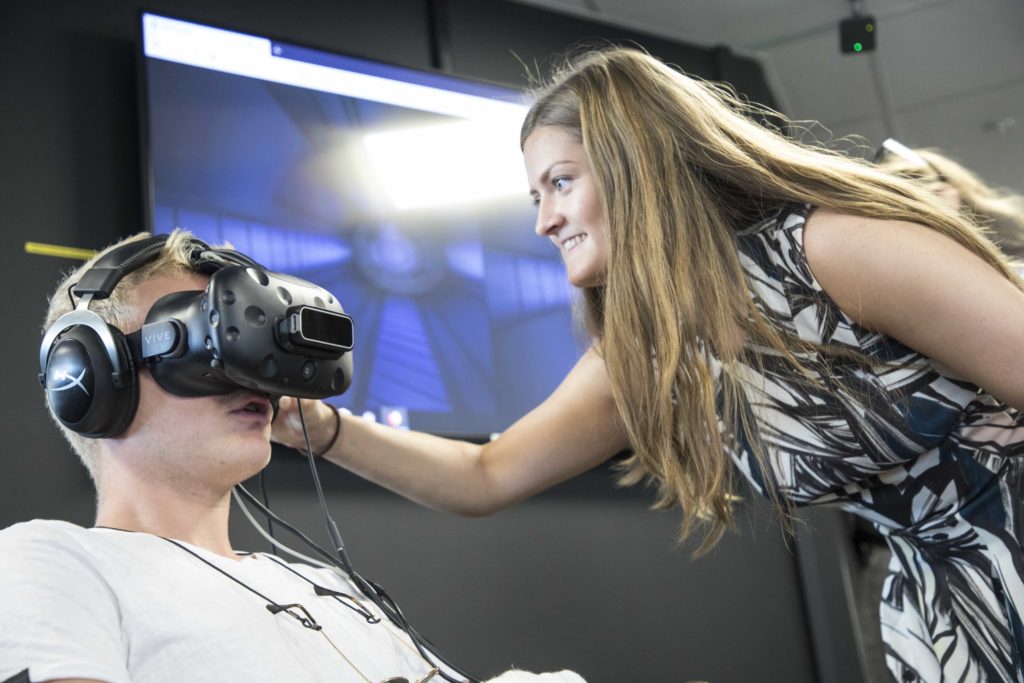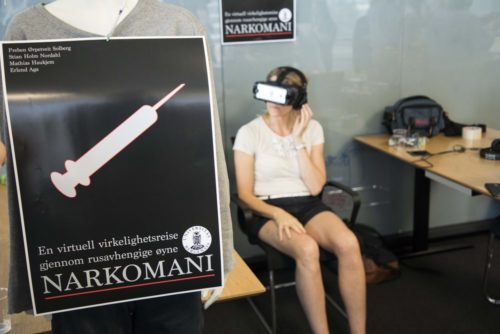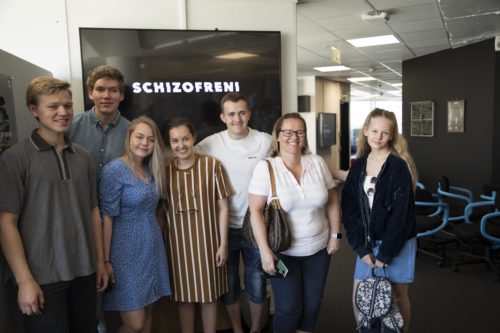Exploring VR journalism in higher education

Bachelor students in Media City Bergen explored the expressive range of VR journalism and produced valuable research insights for ViSmedia.
VR is one of the emerging technologies in newsrooms, and it is important that students across disciplines have the opportunity to explore its possibilities.
In the spring semester 2018, media and interaction design students at UiB produced immersive journalism clips. The students combined 360-video, animation and sound design, and the results were presented to the public at MCB in June. The project hopefully provided students with a journalism experience that will be an asset in the future.
Here we present four original three-minute VR experiences. We invite you to experience these VR-stories for yourself by clicking on the links below. You can have the experience with any kind of VR glasses or Cardboards.
Responsible research and innovation
The Vismedia explores ways to enhance the responsible use of new visual technologies. Thus, developing awareness among media students on how to create responsible storytelling with VR and immersive technologies are at the core of future journalism.
Moreover, the ambition to conduct responsible innovation fits well with innovation pedagogy as an approach to learning. Innovation pedagogy is a based on the principle of active learning and means that students learn by having responsibility for the creative process in group collaboration.
In order to create responsible VR narratives the students had to 1) use proper sources and be truthful, 2) be careful using hidden microphones and cameras, 3) be careful not to violate people’s right to privacy. These limitations were formulated after discussions with journalism professional Kristine Holmelid and ethical theorist Lars Arve Røssland.


Experimental learning
Vismedia use experiments as an active approach to learning. The students were split into four groups, and their stories were cultivated with a combination of mandatory technical tranining and plenary evaluations where guests commented on the qualities of each story/storyboard. This iterative pedagogical process resulted in four very different VR stories who were all nevertheless unmistakably journalistic.
In the finished narratives there are fewer expressive tricks than were up for consideration during the production phase. The groups had to reduce the number of novelties to make the projects realistic to complete.
Student responses
One student reports: “In the early storyboard phase we had many ideas that we got rid of, but also many new ones we brought into the production. In the fourth workshop we also showed our projects to fellow students for the first time. This was an important even. The fact that someone tested what we had made us notice things that did not work”.
One example is that many users have never tried VR before and want to get to know their surroundings, which meant that they looked around in all directions and did not catch important narrative events. “We also discovered which parts of the story that worked well”.

Innovative in an international context
We belive the student projects presented below are truly innovative, and VR environments around the world should learn about them.
Firstly, the projects are innovative in a national perspective. Teknisk Ukeblad explored VR journalism for several years after receiving a Google DNS grant in 2016, and they wrote several articles with valuable technical advice based on their experience. We took their advice into consideration when planning and executing this course, and this saved us from making many unnecessary mistakes.
Secondly, the projects were inspired by internationally renown productions like Francesca Panetta’s “6×9” in the Guardian. This is an immersive experience of being in solitary confinement in a high security prison.
Further reading
The production process was documented by ViSmedia researchers, and we now have a rich data material that can give us insights into the expressive register of VR journalism, and how to teach new transgressive technologies like VR media. The insights will be reported in scientific articles as part of the ViSmedia portfolio.
ViSmedia has previously experimented with innovation pedagogy for drones, and you can read more in the article Taking risks with drones. Responsible innovation pedagogy for media education.
The productions were made for the course INFOMEVI173 Journalistic prototyping. Lars Nyre was the course leader. The practical skills were taught by lecturers Joakim Vindenes, Fahmy Zulfikar and Audun Klyve Gulbrandsen.
Lecturers at Volda University College are also exploring VR journalism in student courses. Ana Sanchez Laws and Tormod Utne have run several courses were they challenge students to make historical and documentary VR stories. Read more here.